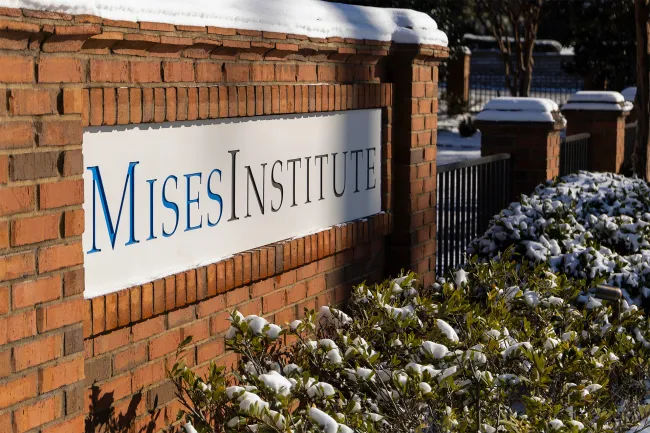The Fed
The Virus and the Money Printing Press: Socioeconomic Effects of the COVID Lockdowns
Accad and Koka interview Ryan McMaken.
Preface to Anatomy of the Crash
One of the important aims of the Anatomy of the Crash is to highlight the truly global nature of the monetary policy failings since 2008—not simply critiquing the actions of the Federal Reserve, but their colleagues at the European Central Bank, the Bank of Japan, and elsewhere.
Why the World Has a Dollar Shortage, Despite Massive Fed Action
Can the US dollar lose its global reserve position? Sure it can, but not to a country that decides to commit the same monetary follies as the Fed. Most countries are trying to out-inflate the Fed. And that's good for the Fed.
The Fed’s Massive Injection of “Liquidity” Also Benefits Uncle Sam
By announcing that it is willing to throw up to $1.5 trillion in electronically created money in order to give three-month loans to those institutions that bought Treasury debt earlier, the Fed is bailing out not only the holders of Treasury debt, but also the Treasury itself.
The Fed Panicked, and Its Rate Cut Is Making the Economy Worse
The Federal Reserve's monumental mistake of cutting rates this past week can only be understood in the context of the rising God complex of central planners: an overwhelming combination of ignorance and arrogance.
The Fed Slashes Rates as Powell Declares Economy “Strong”
Today's rate cut of 50 basis points is the largest rate cut since December 2008, in the midst of the aftermath of the financial crisis. But Chairman Powell insists the US economy is "strong."
Is the Fed Ready for a Recession?
By being so dovish for so long, the Fed has greatly limited what it can do in case of recession without resorting to untried and radical solutions like negative rates.
Money Supply Growth Climbs to 36-Month High
During January 2020, year-over-year (YOY) growth in the money supply was at 6.32 percent. That's up from December's rate of 5.53 percent, and up from January 2019's rate of 3.38 percent.
Central Banking since the 2008 Financial Crisis
In the wake of the financial crisis of 2008, the Federal Reserve and other central banks around the world adopted new “tools” to influence economic activity in addition to its standard open market operations.










